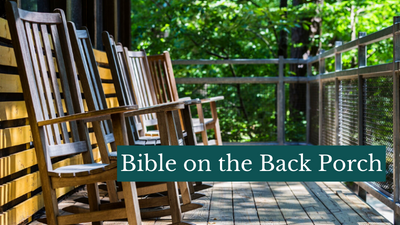On the Back Porch

The First Sunday of Advent, Year B

What We Celebrate
The beginning Advent is also the start of Lectionary Cycle B when we will primarily take our Gospel readings from St. Mark. The reading, taken from the Gospel according to Mark, becomes a signpost to the Advent Season in its use on the first Sunday of Advent, the liturgical season that precedes and prepares for Christmas. It is a season of hope and of longing, of joyful expectation and of peaceful preparation. And yet the gospel begins: “But of that day or hour, no one knows, neither the angels in heaven, nor the Son, but only the Father. Be watchful! Be alert! You do not know when the time will come.”
It is good to remember that Advent is a time of preparation and anticipation for the coming of Jesus Christ, both in his historical incarnation as a baby in Bethlehem and his future return in glory at the end of time. The readings during this season are meant to evoke a sense of longing, repentance, and vigilance – not just for Christmas but also for the destiny of Christian life.
There is a lot more to this gospel. Sit with it for a moment on the back porch.
Full Text of the Sunday Readings
Detailed Commentary on the Gospel
Image credit: Christ taking leave of the Apostles, Duccio di Buoninsegna, 1381| Museo dell’Opera del Duomo, Siena | Public Domain US
Apocalyptic Literature
The 1st Sunday of Advent’s gospel is like an apocalyptic warning – and, in fact, is taken from a section of Mark’s gospel called the “Olivet Discourse” and “the little apocalypse.” But what exactly does that mean? The Bible is filled with dreams and visions about human history coming to a climax, and they’re usually packed with intense imagery and strange symbols. In this video, we’ll explore the meaning of the word “apocalypse” in the Bible, and we’ll learn some basic steps for reading this literature with more wisdom and insight.
Take a few moments to watch this overview video: